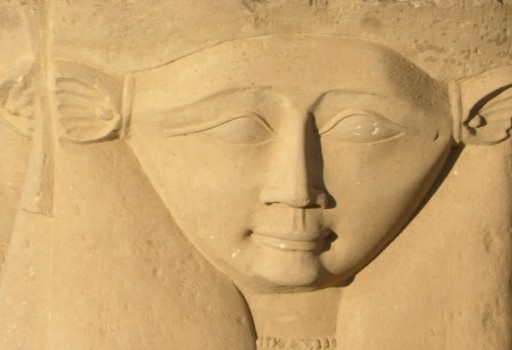The Egyptian landscape stirs far-away memories from distant lives. Egypt calls your Soul into balance. The actual physical journey expands you along with the group energy, and spiritual trips accelerate personal change. Discover your truth, enlighten your spirit and awaken your heart by embarking on a spiritual tour to Egypt.
Sacred Spiritual Tour to Egypt
In Egypt, the stones of the temples and pyramids hold an ancient book of record and keep energetic and sacred memory. Current civilizations are often built over older cultures, and walking can stir memories, and the actual sailing of the Nile stirs deep memory as a pharaoh or high priestess.
Spiritual Tours allow you to accelerate healing and your awakening. As you venture to Egypt, you pick up threads of memory–weaving a beautiful tapestry of experiences by connecting the dots.
Traveling to Egypt two past times, the first Egypt Tour was in 2007 with 25 people and was spectacular. So many miraculous events took place, and we were guided into profound life experiences that changed everyone.
Testimonial
“Egypt was the most amazing experience. When KumaiDevi guided us in meditation inside the Great Pyramid I felt as though I released layers of myself that were no longer needed and replaced it with a renewed sense of my divine Self. This renewed sense of Self propels me to move forward with an accelerated feeling of confidence and new zest of life. I just don’t seem to fit into the “mold” of the person that I was prior to the trip. Amazing journey to Egypt. There are still days when I feel as though I’m still waking up from an experience in a totally different world.” Minnie A., S. Carolina
Do you remember when you were part of an Egyptian dynasty?
What Pharaoh Do You Resonate With
Djoser (reign 2686 BC – 2649 BC)
The most famous Third Dynasty Egyptian pharaoh. He oversaw the construction of the famous step pyramid at Saqqara, a hugely significant milestone in ancient Egyptian architecture.
Khufu (reign 2589 ‒ 2566 BC)
A Fourth Dynasty pharaoh, Khufu’s most significant legacy is undoubtedly the Great Pyramid of Giza, one of the Seven Wonders of the World.
Hatshepsut (reign 1478–1458 BC)
Only the second woman to assume the pharaoh’s role was Thutmose II’s wife, who reigned in the Eighteenth Dynasty. Hatshepsut shored up her legitimacy as pharaoh by claiming that her mother was visited by the deity Amon-Ra while pregnant, thus signaling her divinity. She took to the role of the pharaoh and proved an accomplished ruler, re-establishing essential trade routes and overseeing extended periods of peace.
Thutmose III (reign 1458–1425 BC)
Thutmose III dedicated himself to military training while his stepmother was pharaoh, only taking over the role of the paramount ruler when Hatshepsut died in 1458. The pharaoh’s military training paid off, and he earned a reputation as a military genius.
Amenhotep III (reign 1388–1351 BC)
During Amenhotep III’s 38-year reign, he primarily presided over a peaceful and prosperous Egypt. Indeed, Amenhotep III’s accomplishments as pharaoh were more cultural and diplomatic than military; few Ancient Egyptian pharaohs can match his architectural and artistic legacy.
Akhenaten (reign 1351–1334 BC)
The son of Amenhotep III, Akhenaten, was named Amenhotep IV at birth but changed his name to his radical monotheistic beliefs. The meaning of his new name is “He who is of service to the Aten.” He’s the one true god- Aten, the Sun God.
Tutankhamun (reign 1332–1323 BC)The youngest pharaoh in Egyptian history when he ascended to the throne at just 9 or 10 years old, Tutankhamun became the most famous Egyptian pharaoh of all.
Ramses II (reign 1279–1213 BC)
Ramses II’s reign was undoubtedly the greatest of the 19th Dynasty and unabashedly ostentatious even by pharaoh standards. The son of Seti I, with whom he had a period of co-regency, Ramses II went on to declare himself a god while earning a reputation as a great warrior, fathering 96 children and ruling for 67 years.
Xerxes I (reign 486 – 465 BC)
Xerxes I, reigned in the 27th Dynasty, when Egypt was part of the Persian Empire, having been conquered in 525 BC. Persian Achaemenid Kings were acknowledged as pharaohs, and so Xerxes the Great, as he was known, earned a place on our list by fame, if not popularity.
Cleopatra VII (reign 51 – 30 BC)
The last active ruler of the Ptolemaic Kingdom of Egypt, Cleopatra, presided over the dying days of the Egyptian empire. Yet, her fame has lived on through folklore, Shakespeare and Hollywood. It’s hard to disentangle the real Cleopatra from the legend, but scholars suggest that her portrayal as a stunningly beautiful seductress undersells her brilliance as a leader.
Cleopatra was an astute, politically savvy ruler who succeeded in bringing peace and relative prosperity to an ailing empire. The story of her love affairs with Julius Caesar and Marc Anthony is well documented.

